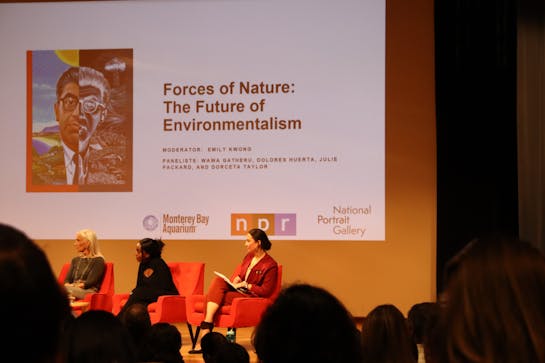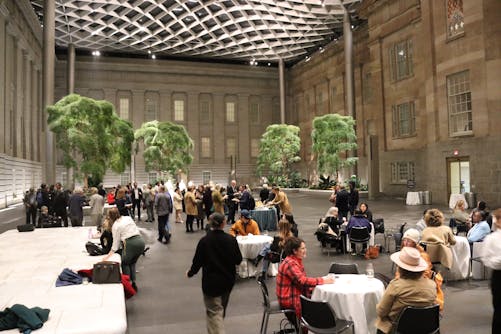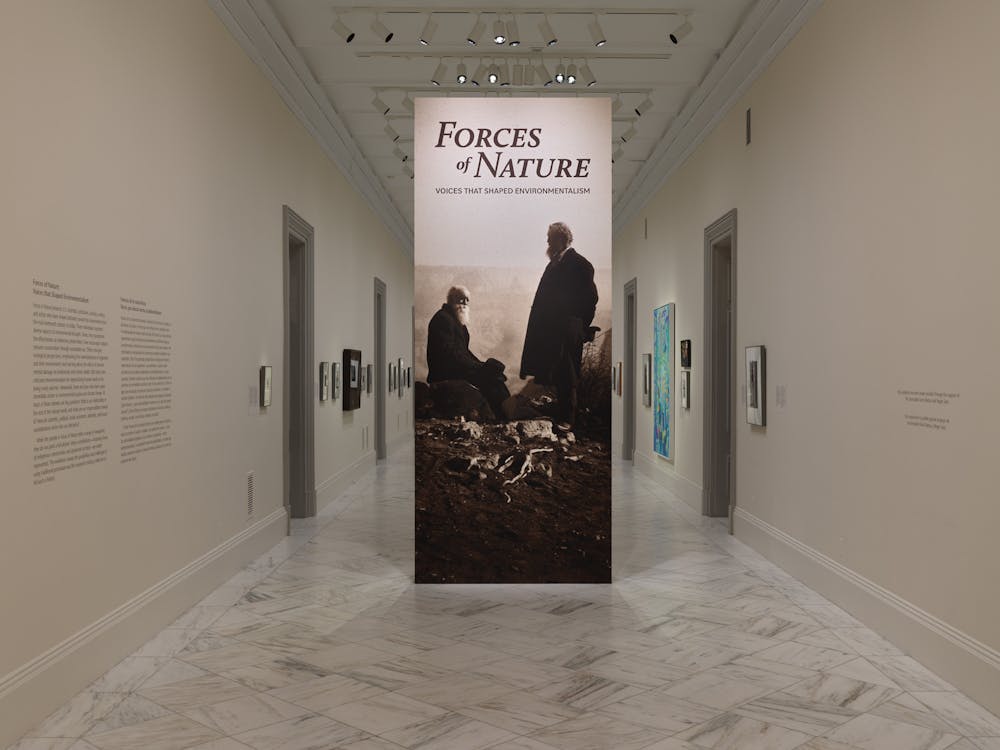Portraits of environmentalists now line the walls of the National Portrait Gallery in the museum’s new “Forces of Nature” exhibition.
Visitors can see photographs, paintings, busts and engravings of environmentalists like Henry David Thoreau, Edward O. Wilson and Rachel Carson until September 2024.
The exhibit, which opened Oct. 20, aims to show people who influenced United States environmentalism starting in the 19th century, according to the website.
Dorceta Taylor, Wawa Gatheru, Dolores Huerta and Julie Packard discussed the exhibit in a panel at the Gallery and explained how it’s missing key environmentalists.

Taylor, a professor at the Yale School for the Environment, said explorers like Sacagawea and York, who guided Lewis and Clarke in their expedition, and writers like Philis Wheatley, who inspired Ralph Waldo Emerson’s environmentalist writings, should have been included.
Gallery Director Kim Sajet also said the exhibit lacked diversity when she introduced the panel.
“Though the exhibition reflects a range of voices, it’s far from extensive,” Sajet said.
The event was sponsored by the Monterey Bay Aquarium, and included Packard, the executive director for the aquarium, as a panelist.
Packard said that environmental policies and advocacy have been unrepresented in the past. But, she continued, that’s changing.
“So much of environmental advocacy, of course, has been driven by mainly white male legislators and mainly environmental organizations that are not led by people of color,” Packard said. “But I think there’s a growing awareness of incorporating the voices of those affected.”
One solution discussed was using more traditional ways of thinking about the environment, methods that aren’t currently discussed in the community.
“It’s totally an antithesis of anything in American science,” Packard said.
Hearing more voices of those who are affected by the climate crisis, Packard said, could help.
Gatheru, founder of Black Girl Environmentalist, an advocacy organization, also said people need to change their understanding of environmentalism in the workplace.
“A green job, in a climate future, is any job that just has parameters around sustainability [and] around climate metrics,” Gatheru said.
She said she hopes teachers change how they teach students about the environment so that more young people of more diverse backgrounds join the movement.
“I think all this conversation needs to come to a point of reaching young people early, like in high school,” Gatheru said.
Policy work could also help, according to Huerta, former vice president of the United Farm Workers’ Union.
She encouraged the audience to use their political power to stop oil companies lobbying courts and politicians.
“There’s a lot of greenwashing among polluters,” Huerta said. “People are putting all their dark oil money into politics and into environmental issues, [and] I think it’s something that we all need to be concerned about and we need to figure out how to be able to stop it.”

Eleanore Humphries, federal ocean policy senior manager at the Monterey Bay Aquarium, said Huerta’s emphasis on individual actions stood out to her.
“There’s something each of us can contribute,” Humphries said. “I think that really came through clearly to me.”
Humphries was also glad the aquarium was part of a more national conversation through the panel.
“If we are connecting people to the environment, we need to act on the ways that we are able to [connect] as an organization,” Humphreys said.
The panel’s call to action for the audience was also motivational for Kaitlyn Dorsinville, a Howard University student who attended the panel as an audience member.
“There was a strong sense [that] we all need to pitch in and do our part to help the environment,” Dorsinville said. “It helped me envision myself going towards environmental justice.”
For audience member Lindsay Martin, the panelists gave her hope because of the women’s leadership and diversity of generations.
“It was an honor to see all of these different icons on the same stage,” Martin said. “It’s really impressive and sort of notable that every single person on that stage was a woman.”
Regardless of their differences, Martin said the four panelists were enthusiastic and hopeful.
“They have the same level of enthusiasm and it’s continued throughout their entire careers,” Martin said. “That’s inspirational for anybody, not just environmentalists.”
This article was edited by Soumya Sahay, Patricia McGee and Abigail Pritchard. Copy editing done by Isabelle Kravis and Charlie Mennuti.





